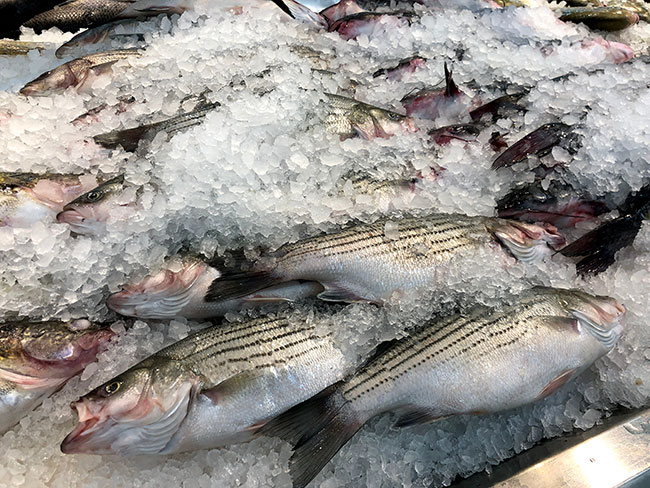
Pure-strain striped bass: An opportunity waiting to be tapped
October 13, 2021
By
Liza Mayer
 The market opportunity for striped bass exists, is strong and largely untapped, says study
Photo: ©raksyBH / Adobe Stock
The market opportunity for striped bass exists, is strong and largely untapped, says study
Photo: ©raksyBH / Adobe Stock The market opportunity for striped bass exists, is strong and largely untapped — and it is for the taking.
This is the message from American researchers who explored the potential opportunities for commercial-scale farming of striped bass (Morone saxatilis) in the United States.
The fundamentals, such as the culture methods and the supply of marine striped bass bred in captivity, are already established, said authors Andersen, L.K. et al. in a 2021 paper titled, “The status of striped bass, Morone saxatilis, as a commercially ready species for US marine aquaculture.”
The authors wrote that pure-strain striped bass meets all of the criteria that could diversify aquaculture into coastal areas: the species fetches a premium price; there’s high, albeit inconsistent, consumer demand; it adapts well to localized production environments and, perhaps more importantly, it can live in fresh or saltwater unlike its hybrid counterpart.
Hybrid striped bass is farmed in the US (farm gate value in 2018 was $50 million), but it — nor any other currently available commercial aquaculture species — could not meet the “high demand” seen in the mid-Atlantic region for larger, white-fleshed marine fish with desired size of 3 to 5 lb per fish, they wrote.
They noted that the growth and feed efficiency of hybrid striped bass declines after it reaches 1.5-lb weight, but there are some producers in Texas and Mississippi that have grown hybrid striped bass to 3 lb in 18 to 24 months. The pure strain can grow to the target market size of 3 lb within approximately 24 months or less.
However, there are challenges in getting this potentially new industry off the ground. These are the lack of current commercial US producers and data to support the economic viability of commercial production, the authors said.
To solve them, industry partners, government researchers, policymakers and university scientists have banded together to form “StriperHUB,” a program that will be coordinated by the North Carolina Sea Grant.
StriperHUB will define striped bass markets and economics of production, develop education and training programs, clarify regulatory permitting and licensing procedures, and promote comprehensive outreach and visibility among likely producers and consumers of this new seafood product, which will be available in markets along the Eastern US Coast, announced the NC State University.
The university is instrumental in laying the ground work for the potential new industry. Its researchers have bred six generations of marine striped bass in captivity as part of the R&D to provide broodfish for hybrid striped bass (Morone chrysops x Morone saxatilis) food fish production and recreational fishery stock enhancement. Those marine striped bass are distributed across North America and are the potential sources for the envisioned commercial-scale farming.
Once commercial striped bass production and marketing has been demonstrated, venture capital investment will be required for the next phase of industry development, said the study authors.
Advertisement
- USDA awards $10M to address aquaculture challenges
- AquaBounty launches new sustainability reporting initiative





